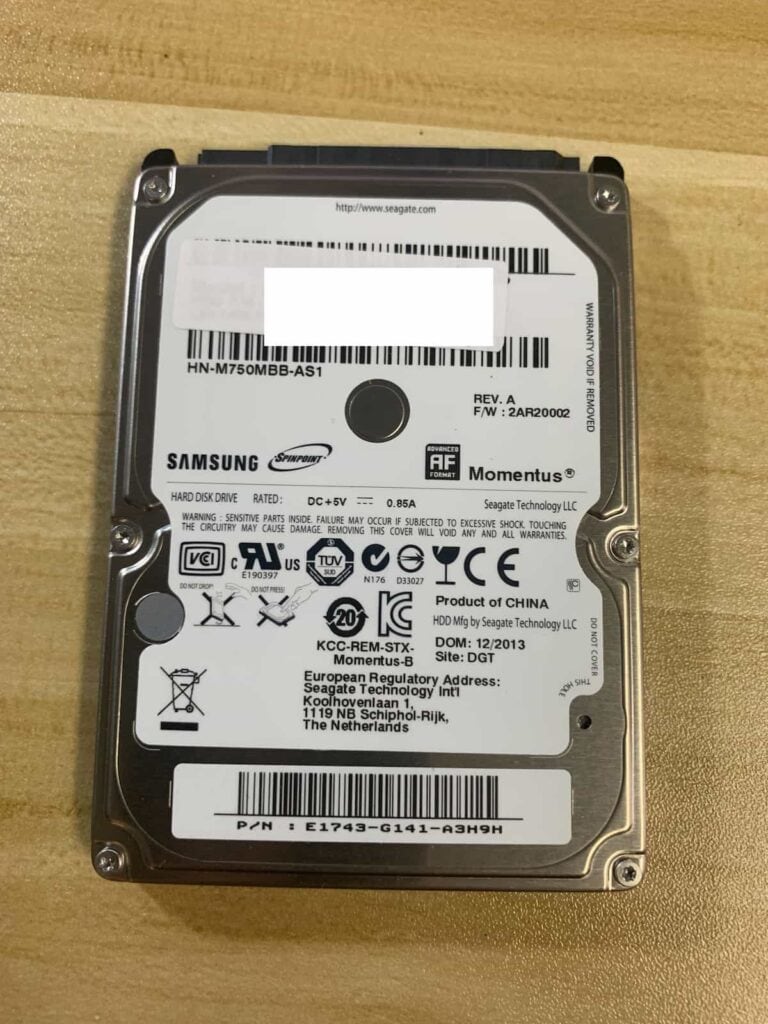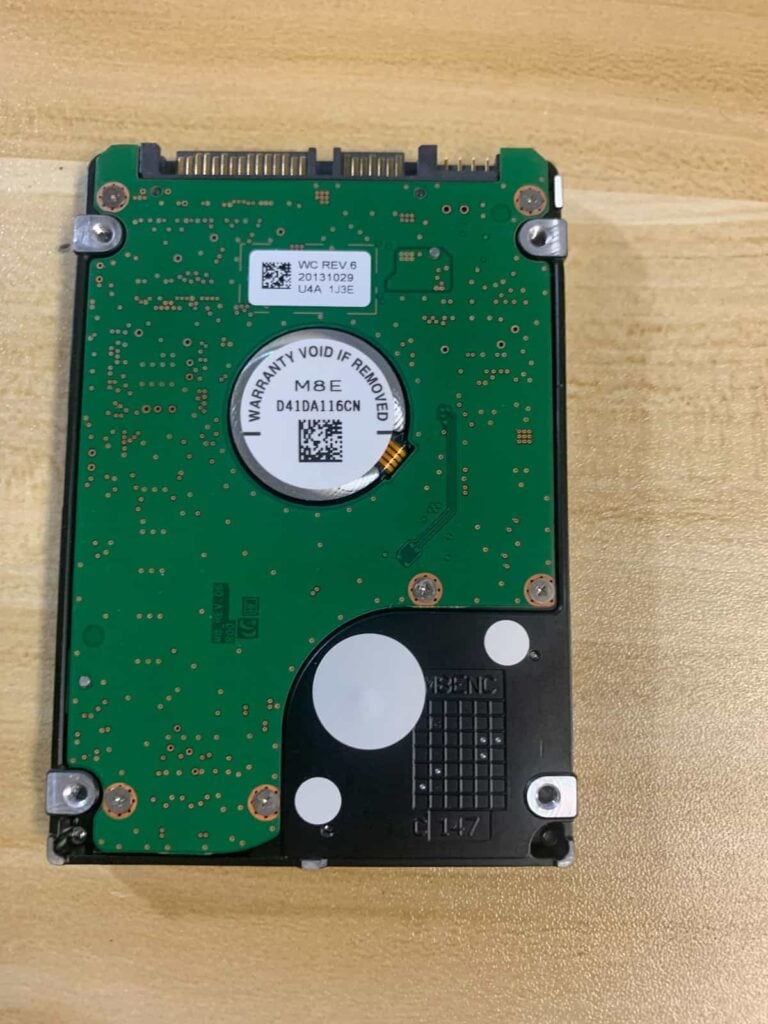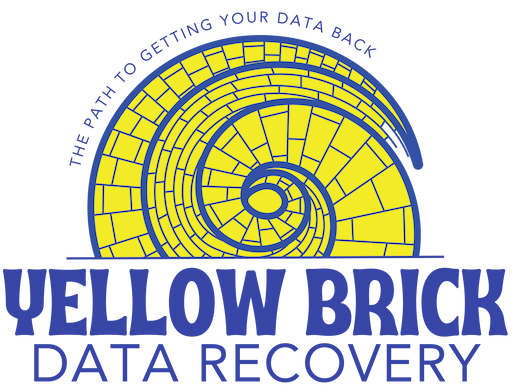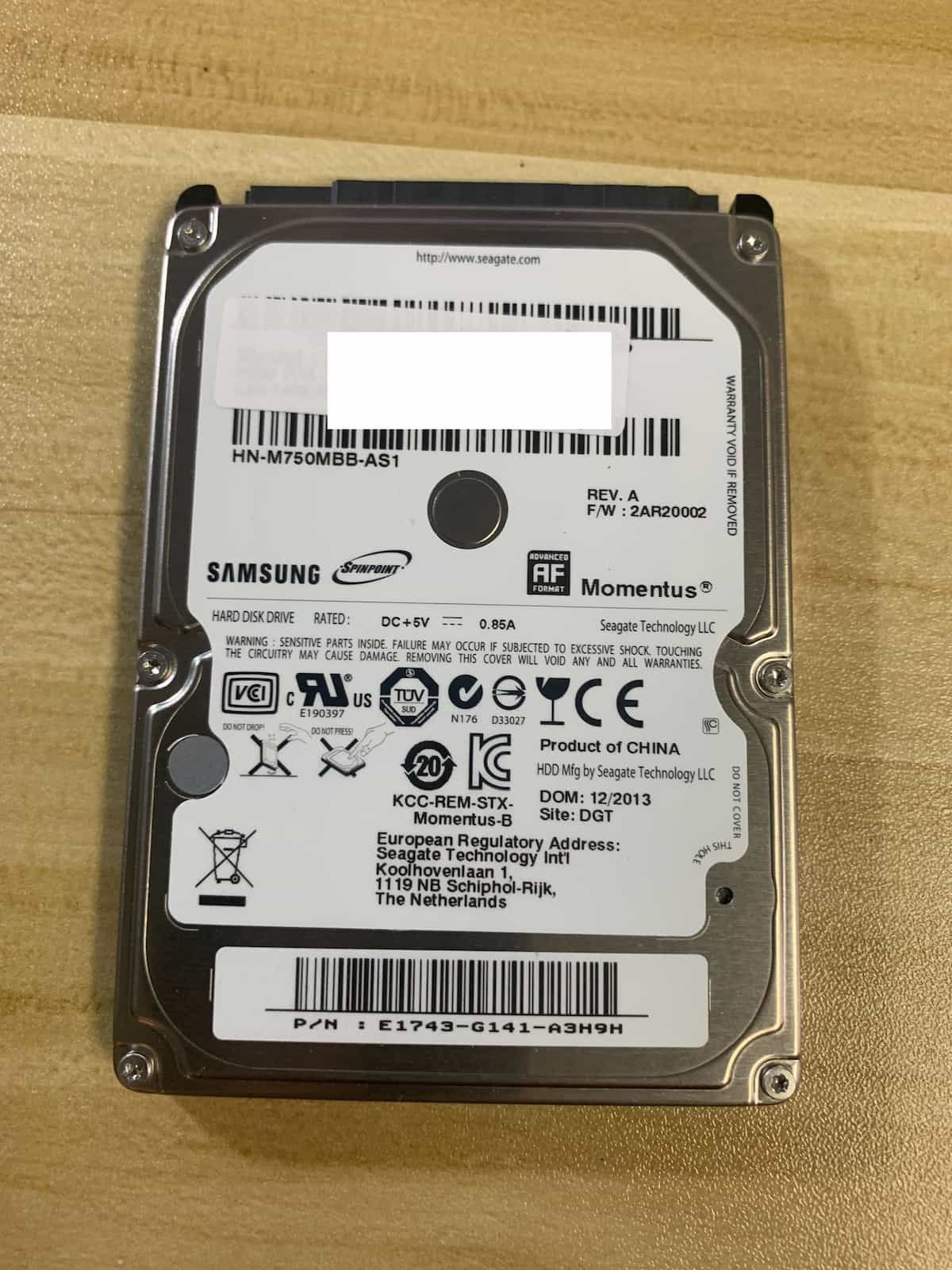Recovering hard drive that is making a beeping noise
This beeping Samsung drive came in from a local computer repair shop. They had sent it to us for recovery as they were not able to get anything from it themselves. They reported that when plugged in the drive would make audible beeps, but would not show up on their computer at all. If you run a repair shop and need an affordable recovery lab to work with, please get in touch as we offer a few options!
Why is my external hard drive beeping?
Your external hard drive is beeping because the platters are not able to spin as they should. This is usually caused by the heads being stuck to the surface of the platter instead of being on the parking ramp where they should be.
Beeping hard drives are usually drives with stuck heads. Many people will hear the beeping sound coming from their Samsung drive and think it is some sort of error noise. I have had a couple of clients mention that they looked up “Samsung error beep codes” to try to decode what their drive is trying to tell them.
Unfortunately, drives do not have any speakers inside whatsoever, and will not make audible tones on purpose. The beeping noise coming from the drive is actually the sound of the motor trying to spin up and failing. The reason for the motor not being able to spin can be a few different things, but the most common for a smaller portable-sized drive is that the heads are stuck on the platter.
The cause of the beeping sounds
Normally the heads read the data from the platters while the platters spin around very quickly. A lot like the needle on a record player. But in this case, the heads float right above the surface of the platters on the buffer of air that is created when the platters spin at over 5400 rpm. Sometimes the platters can stop spinning but the heads don’t make it over to their regular parking position, causing the heads to touch the surface of the platters.
The motor in the smaller drives isn’t strong enough to start the platters spinning with the heads touching them, so it attempts to spin the platters and squeals when it is not able to. This beeping sound coming from the hard drive is also sometimes referred to as a buzzing sound. Still others refer to it as a squeal, screech, or error tone.
DIY recovery options
I have seen a few videos on YouTube showing how to get the data off your drive by moving the heads off the platter. I go into more detail about these methods and words of caution in my beeping hard drive guide.
Diagnosing the beeping hard drive
The first step to diagnosing a hard drive that is beeping is to remove the cover in a cleanroom environment. Once the cover is off the drive, you will see if the heads are stuck on the platters or if they are parked properly. If they are stuck on the platter like they were in this Samsung hard drive, then you continue to the next step of freeing the heads for inspection.
Using a special tool that will lift the heads off the platter, you move them to the parking ramp and remove the head stack from the hard drive to inspect it under a microscope. It is important to carefully inspect the heads for any damage as a damaged head could cause scoring or scratching on the surface of the platters if used without replacement.


Imaging the hard drive
This particular drive had a head stack that looked perfect under the microscope, and there was no damage on the platter surface. I installed the original heads back into the drive and connected it up to my PC-3000. I turned the power on to the drive, and it spun up with no beeping sounds! The platters were able to get up to speed, and the heads tested good.
Preparing the drive for imaging consists of turning off everything that could interfere during the cloning process, then moving straight into the imaging stage. I always do one quick imaging pass with the settings on the imager set to skip a large number of sectors if it hits any troubled areas. This drive imaged perfectly with no hiccups and finished the first pass with 100% of the sectors recovered.
Checking for corruption
Usually drives with stuck heads have no corruption once you get all the sectors recovered. The idea is that the drive stopped working suddenly, so unless it was writing something very important when that happened, nothing will be amiss. I always like to run a good data recovery program to verify the integrity of the partition, then continue to move all the recovered data to the new hard drive.
In this case, all the data was easily found with no corruption present. All folder structure and file names were intact and I moved all the recovered files to the new hard drive.
The customer was very pleased to have all the data off their beeping drive. They were worried when it started making a beeping sound that it had failed for good and might not be recoverable. The relief you feel when your important data has been recovered is such a great feeling. I had a drive fail on me when I was young (well before I got into the recovery industry), and I remember how it felt to get all those important files back safe and sound.
Beeping drive data recovery services
If you need data recovery on a hard drive that is making a beeping sound, please consider sending it to us! I recover beeping drives (as well as all kinds of hard drives) every week and am a pro at the procedures needed to get your data back safely. I am pleased to be able to offer affordable beeping drive recovery, usually coming in about $1000 under the quotes of the big data recovery companies.
If you have any questions at all, please feel free to reach out directly to me (Aaron). I would be happy to discuss your particular recovery case and help you get the process started. If you would like a quote for your recovery, please fill out my quick data recovery quote form.
Thanks for reading!
Drive info: SAMSUNG ST750LM022, Momentus, Seagate Technology LLC, HN-M750MBB-AS1, REV. A, F/W: 2AR20002, DOM: 12/2013, Site: DGT, Product of CHINA, KCC-REM-STX-Momentus-B, Computer P/N: E1743-6141-4349H

